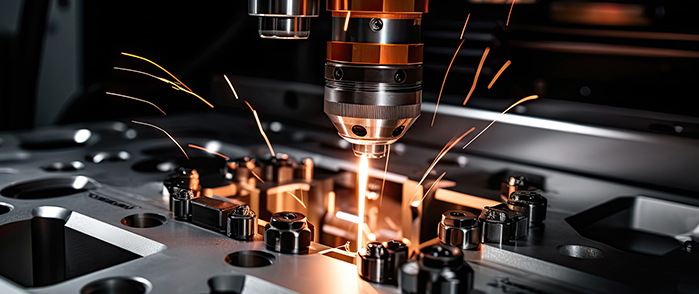Tool holders secure the cutting tool firmly in place and transfer power from the machine spindle to the cutting tool. Therefore, maintaining balance in machining is of critical importance. A balanced tool holder ensures smooth operation during the machining process. Different tool holder types have varying levels of balance depending on their design. While some tool holders are inherently balanced, others are not, and balance levels are measured in grams. Maintaining proper balance leads to reduced tool wear, improved surface quality, and extended tool life.
Key Features of a Balanced Tool Holder
- Precision: Tools must perform without deviation from specified dimensions. Tool holders play a significant role in ensuring eccentricity, concentricity, and axial alignment.
- Rigidity: A rigid tool holder remains stable during cutting operations, preventing tool deflection and vibration. This protects both the tool and the workpiece. High-quality tool holders can absorb heavy machining loads and minimize vibrations, thereby extending tool life.
- Versatility: Tool holders that allow quick changes of cutting tools improve productivity and reduce setup times. This minimizes the need for specialized setups in complex machining operations.
Essential Tips for Machining Processes
- Torque Transmission: The primary function of tool holders is to transfer torque from the machine spindle to the cutting tool, maximizing power while minimizing energy loss.
- Radial Runout: Concentricity is essential for accurate machining results. Ensuring proper tool alignment reduces axial displacement and improves precision.
- Vibration Dampening: Tool holders that absorb vibrations during cutting improve machining quality. Uncontrolled vibrations can damage tools and result in poor surface finishes.
- High-Speed Capability: Tool holders designed for high-speed operations provide excellent stability and enable faster cutting speeds.
Explore Different Types of Tool Holders
Choosing the right tool holder is critical for optimizing machining performance. When selecting a tool holder, consider factors such as spindle type, cutting operation, power capacity, application, and desired cutting parameters.
Common tool holder types used in the machining industry include:
- Hydraulic Tool Holders: Utilize hydraulic pressure to clamp the cutting tool securely, dampening vibrations and absorbing forces. These are ideal for both roughing and precision machining.
- Shrink Fit Holders: Provide high clamping forces through thermal expansion, ensuring superior surface quality at high feed rates.
- ER Collets: Offered in various sizes, ER collets are ideal for light-to-medium load applications and provide flexible gripping solutions.
The Importance of Your Machine Spindle
The spindle is a critical component of any machining center. When selecting a tool holder, ensure compatibility with your machine’s spindle and consider its technical specifications.
Common spindle interface types include:
- Steep Taper Interfaces: CAT and BT types offer high rigidity and are widely used.
- Tapered Face Interfaces: Provide enhanced rigidity and stable performance at high speeds.
- HSK Interfaces: Perfect for high-speed and high-accuracy applications.
Considerations for Choosing the Right Tool Holder
- Straight Shanks: Feature a consistent diameter and are suitable for light-to-medium workloads.
- Weldon Shanks: Provide robust clamping and high torque transmission, making them ideal for heavy-duty machining tasks.
Conclusion
Selecting the right tool holder is essential for achieving efficient and precise machining results. Secure and compatible tool holders extend tool life, reduce costs, and enhance productivity in your operations. By investing in the appropriate tool holder for your machining needs, you can optimize performance and achieve superior outcomes.
